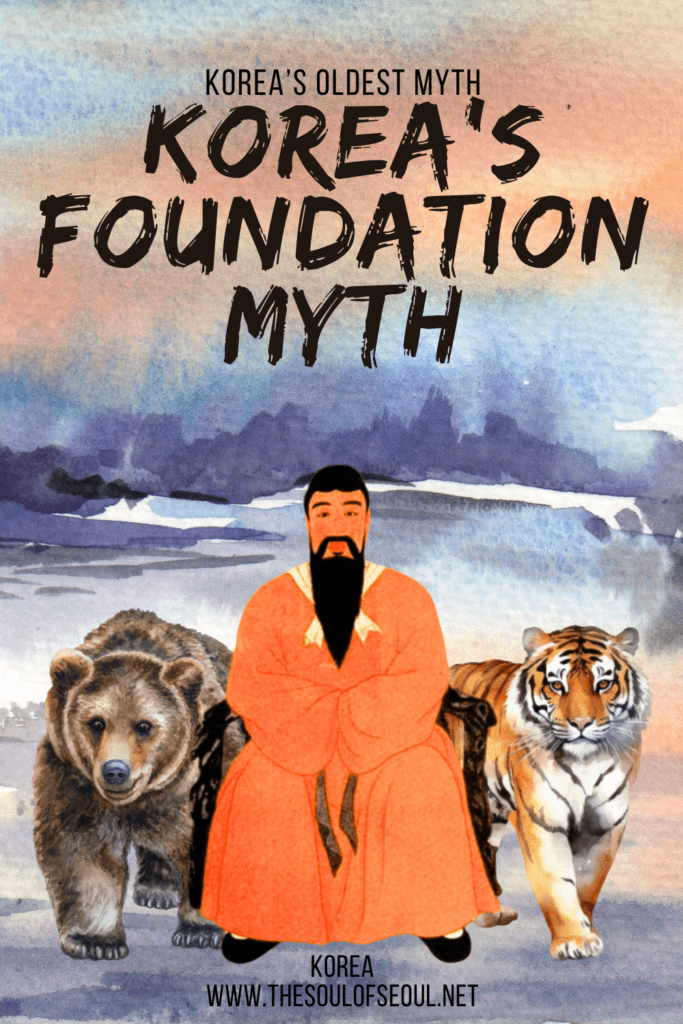National Foundation Day In Korea and The Myth That Started It All
I have visited a lot of museums and exhibitions in Korea over the years and I’m always drawn into the tales and stories of Korean myths and folklore. If you learned about the Roman gods and Greek mythology in school and loved the tales and lore, you’ll likely be interested in the Korean mythology as well. The origin story of Korea is quite the tale and if you haven’t heard it yet, get ready to discover the beginning of Korean mythology and why today National Foundation Day (개천절) is celebrated.
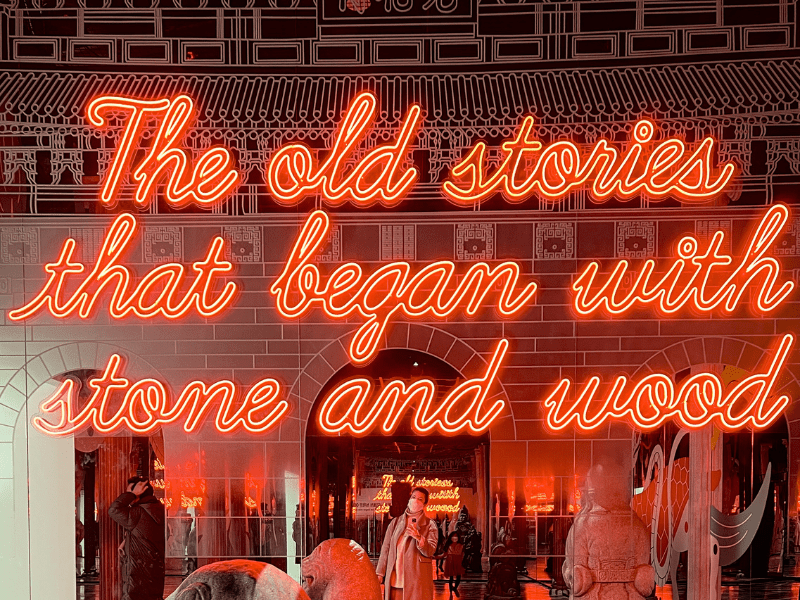
Get ready to dive into Korean folklore, myth, and legend:
- When is National Foundation Day in Korea?
- What does gaecheonjeol mean?
- What To Know About Korean Myths and Folktales
- Books to Read Korean Folk Tales, Myths, and Legends
- Korean Mythology In Brief
- The Myth of the Foundation of Korea
- How to celebrate National Foundation Day in Korea
(This post contains affiliate links, which means I receive a certain percentage of a sale if you purchase after clicking at no cost to you. Thank you for your support.)
When is National Foundation Day in Korea?
According to the myth, Dangun was born on the third day of the tenth month of the year lunar calendar. After 1949, the government designated an annual national holiday on October 3rd. Don’t know who Dangun is? You will find out below.
What does gaecheonjeol mean?
The word gaecheon (개천), which makes up the holiday’s Korean name gaecheonjeol (개천절), means “opening of heaven” or “the day the sky opened” and refers to how Hwanin opened heaven to allow his son to descend to Baekdu Mountain.
There is a tradition with Koreans to view the foundation of Gojoseon by Dangun as the beginning of Korean history. This idea that Koreans are descendants of Dangun became popular during the Joseon Dynasty and the Japanese colonial period though existed for a long time before that.
What To Know About Korean Myths and Folktales
When you begin to delve into the world of Korean folklore and myths, you’ll find that there is a fascinating number of creatures, gods, and spirits that you can learn about. Korean lore is an interesting amalgamation of cultural elements and beliefs including Buddhism, Taoism, Shamanism, and Confucianism which makes it super interesting but can also be cause for confusion as you try to figure out how the stories are connected… and they’re not always as they come from various regions of Korea at various times in history.

There are three categories of supernatural and mythological creatures in Korea:
- Mindam (민담): Folklore
- Shinhwa (신화): Myths
- Jeonseol (전설): Legends
Collectively, myths, legends, and folklore are referred to as seol-hwa (설화), or tales, in Korean.
In our house we do a lot of reading both in English and in Korean and as our daughter is young, we read a lot of folktales in both languages. It’s easy to get a bit confused about the differences between folktales, myths, and legends, so if you’re also studying with your children, here is a good reference point to help them (and yourself) remember how to tell the stories apart.
| Shinhwa (신화): Myths | Jeonseol (전설): Legends | Mindam (민담): Folklore | |
| The Main Character | a divine figure | an extraordinary figure | an ordinary figure |
| Background | the beginning of the world, or a sacred place | specific place and time | a vague space |
| Personality Traits/Attitude | sacredness | credibility, reliability | as a lesson |
| Scope of Transmission | ethnic | local | global, universal |
| The Ending | a great victory | a tragic ending | a happy ending |
| Conflict Between The Ego and the World | ego = world | ego < world | ego > world |


Books to Read Korean Folk Tales, Myths, and Legends
Korean Mythology: Folklore and Legends from the Korean Peninsula: This book has a good compilation of stories to learn the important deities in Korean mythology, Korean cosmogony myths, the mountain spirits and mythical creatures and more all the way back to the Three Ancient Korean Kingdoms.
Korean Children’s Favorite Stories: Fables, Myths and Fairy Tales: I learned about most of the creatures and gods through reading Korean children’s stories with my daughter. If you have kids, this is a great way to learn and escape into the myths and legends together.
Tales of Korea: 53 Enchanting Stories of Ghosts, Goblins, Princes, Fairies and More! This is a great classic collection of Korea’s best-known folktales. This book also has some beautiful minhwa paintings so you can see how the beings were depicted in historical works.
Korean Mythology In Brief
Korean mythology is diverse and multilayered. Not only are there a great number of myths but the structure of these myths is complex and varied. In general terms, a myth, sinhwa (신화), refers to a story, hwa (화), about a god or gods, sin (신), or about a sacred being or phenomenon.
Korea has many sacred myths which you will run into all over as you travel the peninsula. The myths range from sacred beings from the absolute who created the world, to the heroes who founded nations, to village guardian deities which you can find out about at places like the Korea Stone Art Museum, to gods who determine a good harvest or a good fishing catch, to the god who grants a child.

The most common myths you’ll hear when you begin to delve into the stories in Korea are the foundation myths, geonguk sinhwa (건국신화), that are recorded in documents and the shamanistic myths, musok sinhwa (무속신화) that are orally transmitted in private shaman culture.
The gods that appear in Korean myths are only summoned in relation to humans and affairs of the human world. A primary qualification required of gods in Korean mythology is that they create something new and unprecedented which makes reading about them very interesting.

Contrasting Greco-Roman mythology in which gods and humans are clearly distinguished and humans can not become immortal gods no matter what they do, in Korean mythology, humans can become gods. In the founding myths, the protagonists metamorphose back into gods and return to the sacred world once their lives as kings in the human world come to an end. Hwanung’s son, Dangun, rules the human world for a long period and later becomes the mountain god.

In Korean myths, gods become more complete beings through their relationships with humans. And humans likewise are reborn from their original form as new beings through their relationships with gods. And the most ideal human being is produced through the union of these two beings. Gods and humans enjoy a symbiotic relationship in Korean mythology.
The Myth of the Foundation of Korea
The Tale of the Origin of Gojoseon
Korea’s oldest myth, it is based on the founding of Gojoseon (고조선), the first ethnic Korean state established in the northern part of the Korean peninsula some 4,000 years ago.

Sangje (상제): The Supreme Ruler of Heaven
At the pinnacle of Korean deities stands Sangje, the supreme ruler of heaven, also known as Haneul. As the father of all Korean gods, Sangje, also called Hwanin (환인), served as the conduit for other gods seeking immortality. In Cheondoism, Sangje is revered as the god of the sky.

Hwanung (환웅): The Father Of Dangun
Hwanung, born to Sangje, or Hwanin, desired to dwell among mortals on Earth and asked his father if he could descend from heaven. Hwanin consented and Hwanung, accompanied by 3,000 servants including the Earl of Wind, pungbaek (풍백), the Master of Rain, ubaek (우백), and the Master of Clouds, unsa (운사), and the Three Heavenly Seals, or dojang, descended to Baekdu Mountain (백두산). There, he founded the “City of God”, or Sinsi.
The tale unfolds as a tiger and a bear who hope to be turned into humans visit Hwanung who agrees to their request if they can undergo a challenge to stay in a cave and eat only garlic bulbs and mugwort for 100 days.
The tiger gave up before day 20, but the bear remained. Impressed by the bear’s discipline and dedication to the challenge, Hwanung granted the bear’s wish and the bear was instantly turned into a beautiful woman named Ungnyeo (웅녀). Happy at being transformed, Ungnyeo realizes she is lonely and asks Hwanung to bless her with a child. Instead, Hwanung marries her and she gives birth to Dangun.
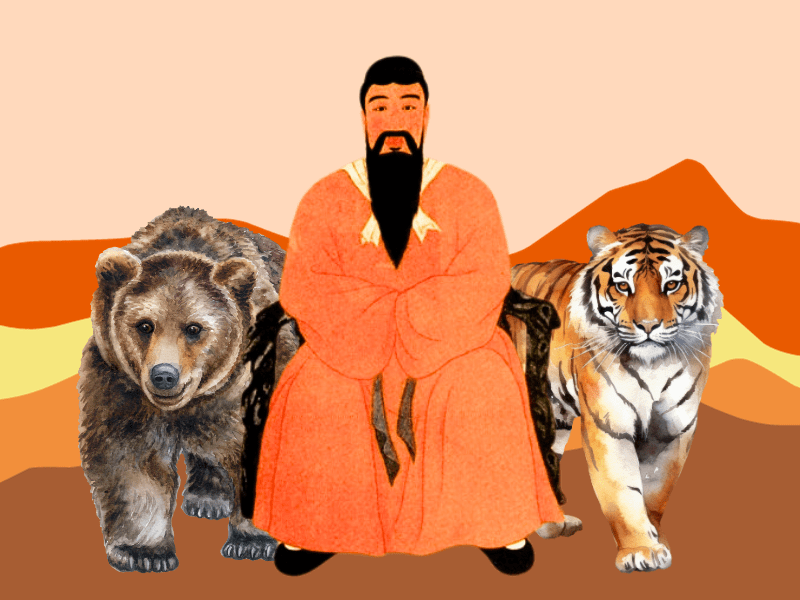
Dangun (단군): The Founder of Gojoseon
Dangun is credited as being the founder of the first Korean kingdom called Gojoseon (고조선) in 2333BC. He created the kingdom of Asadal, the “place where the morning sun shines”. Dangun remained on earth for 1908 years and when he finally left the human world, he ascended to his position as the Mountain God, or Sanshinryeong (산신령). As you’re traveling around Korea, you can find temples devoted to Dangun. I found one in Sajik Park in downtown Seoul, Korea.
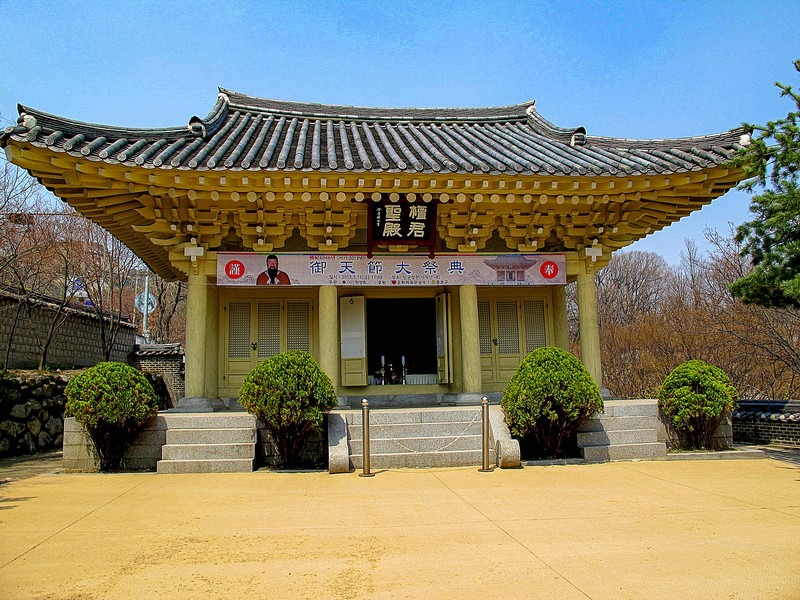
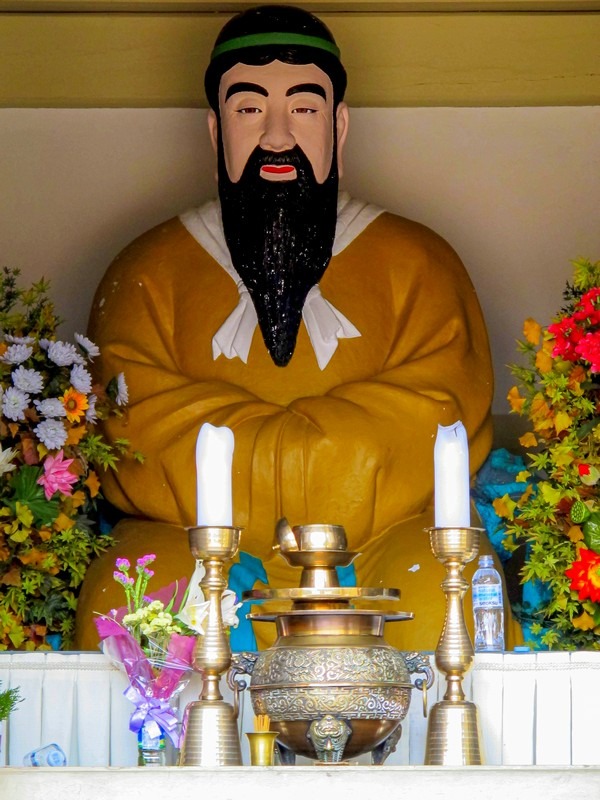
How to celebrate National Foundation Day in Korea
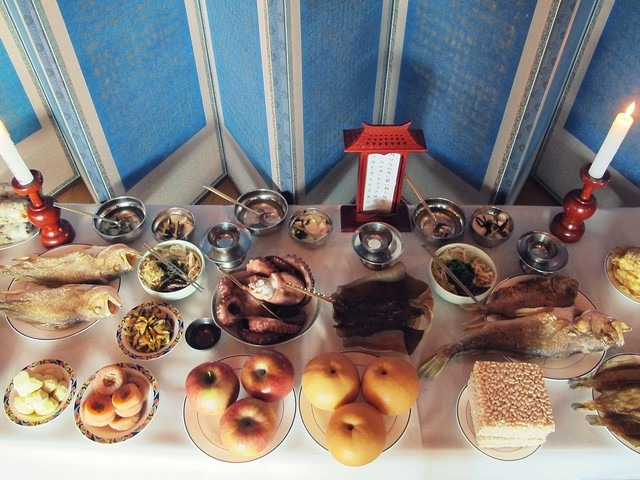
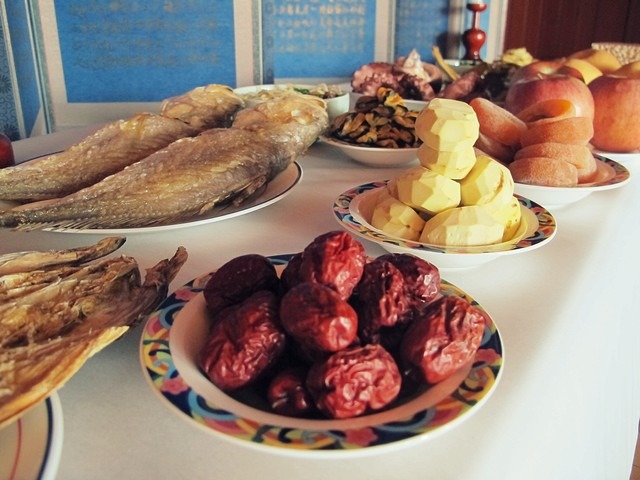
Hold Charye
If you’ve celebrated Jesa with a Korean family on Chuseok or Seollal, the Lunar New Year, you’ll recognize charye. In this ceremony, Koreans pay respect to their ancestors by setting up an altar with delicious food and then offering this food in a number of rituals.

See a fireworks display
There are numerous fireworks displays that take place around the country to celebrate National Foundation Day. You can usually find a fireworks display at the Han Riverside in Seoul.


Hike up a mountain
While hiking up Baekdu Mountain would make the most sense, it’s on the border of China and North Korea so would make a trip there quite difficult. The next popular alternative is Halla Mountain on Jeju Island. Both Baekdu and Halla are volcanoes with crater lakes at the summit so quite a similar atmosphere.
Alternatively, there is Manisan Mountain, closer to Seoul where you can find the Chamseongdan Altar, a shrine dedicated to Dangun, at the summit.
Watch a parade
Head to downtown Seoul and you’ll likely find a fun parade and performances taking place around the main square. If you want to see a performance, head to Sejong Center for the Performing Arts which hosts numerous traditional music concerts, dances, and taekwondo demonstrations.
Did you like this post? Pin IT!

